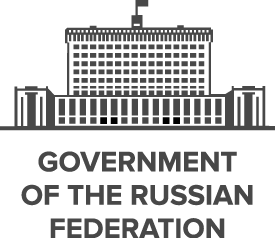Founded in the 12th century, the Principality of Muscovy was able to emerge from over 200 years of Mongol domination (13th-15th centuries) and to gradually conquer and absorb surrounding principalities. In the early 17th century, a new ROMANOV Dynasty continued this policy of expansion across Siberia to the Pacific. Under PETER I (ruled 1682-1725), hegemony was extended to the Baltic Sea and the country was renamed the Russian Empire. During the 19th century, more territorial acquisitions were made in Europe and Asia. Defeat in the Russo-Japanese War of 1904-05 contributed to the Revolution of 1905, which resulted in the formation of a parliament and other reforms. Repeated devastating defeats of the Russian army in World War I led to widespread rioting in the major cities of the Russian Empire and to the overthrow in 1917 of the imperial household. The communists under Vladimir LENIN seized power soon after and formed the USSR. The brutal rule of Iosif STALIN (1928-53) strengthened communist rule and Russian dominance of the Soviet Union at a cost of tens of millions of lives. After defeating Germany in World War II as part of an alliance with the US (1939-1945), the USSR expanded its territory and influence in Eastern Europe and emerged as a global power. The USSR was the principal adversary of the US during the Cold War (1947-1991). The Soviet economy and society stagnated in the decades following Stalin’s rule, until General Secretary Mikhail GORBACHEV (1985-91) introduced glasnost (openness) and perestroika (restructuring) in an attempt to modernize communism, but his initiatives inadvertently released forces that by December 1991 splintered the USSR into Russia and 14 other independent republics.
Following economic and political turmoil during President Boris YELTSIN's term (1991-99), Russia shifted toward a centralized authoritarian state under the leadership of President Vladimir PUTIN (2000-2008, 2012-present) in which the regime seeks to legitimize its rule through managed elections, populist appeals, a foreign policy focused on enhancing the country's geopolitical influence, and commodity-based economic growth. Russia faces a largely subdued rebel movement in Chechnya and some other surrounding regions, although violence still occurs throughout the North Caucasus.
Russia is a semi-presidential federation.
Members:
Resources
Displaying 661 - 665 of 1046Regional Law No. 996-149 “On subsidiary smallholding”.
This Regional Law establishes legal grounds for performance of subsidiary smallholding by citizens (natural persons) and state support thereto by state bodies and local government in the form of financial assistance for production of agricultural commodities and preferential taxation. Either urban land or agricultural land in the countryside, allotted to citizens or purchased thereby, can be used for subsidiary smallholding. Subsidiary smallholding shall include farming, gardening, horticulture and stockbreeding.
Regional Law No. 53-OZ “On protected areas”.
This Regional Law regulates relations in the sphere of organization, protection, conservation and management of protected areas with a view of conservation of unique and typical natural complexes and objects, wild fauna and wild flora, and ecological education of the population. Land areas that are integral part of protected area s under management by state and municipal environmental institutions shall not be subject to privatization. Regional protected areas can be instituted either with or without land expropriation from landowners, landlords, land tenants and lessees.
Regional Law No. 1080-220 “On turnover of agricultural land”.
This Regional Law regulates relations concerning ownership, tenure and disposal of plots agricultural land and also land share in common property. It also establishes that minimum agricultural land plot allotted to legal persons shall be 0,25 ha, while maximum agricultural land plot that can be allotted to natural and legal persons shall not exceed 50 percent of total agricultural land available within the boundaries of a single municipal unit. Regional administration shall have preferential terms for purchase of agricultural land in case of public sale thereof.
Regional Law No. 38-Oz “On state protection and management of the objects of cultural heritage”.
This Regional Law regulates the relations in the sphere of conservation, management, promotion and state protection of the objects of cultural heritage.
Regional Law No. 886 VH-I “On land”.
This Regional Law regulates ownership on land plots, land tenure and lease, and also turnover of land plots and land shares in common land property related to agricultural land. Land tenure shall be performed in accordance with purposeful use of land, legal regime and authorized land uses in accordance with zoning of the territory. Land tenure must ensure conservation of ecosystems.


